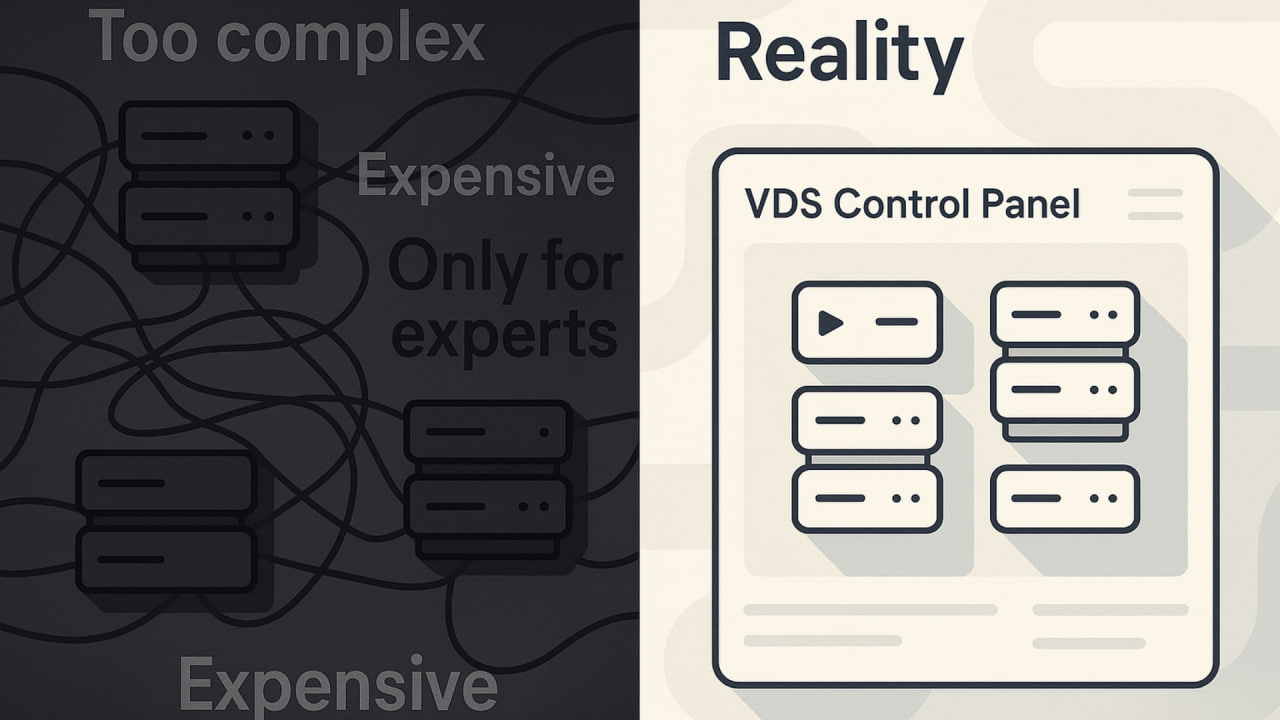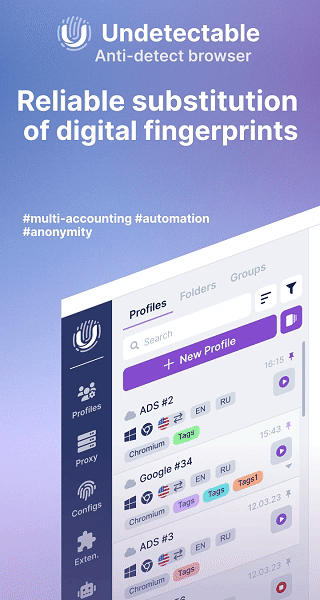
Disclosure: This site may contain affiliate links. If you make a purchase through these links, I may receive a commission at no additional cost to you. However, all opinions are my own.
The world of hosting is full of stereotypes and misunderstandings. This is especially true for a virtual dedicated server – VPS (or VDS, which is practically the same thing). Many users, especially beginners, are afraid to even think about switching to VPS/VDS, considering it complicated, expensive and intended exclusively for professionals. In fact, much of what is said about VDS is myths, outdated or completely out of touch with reality. In this article, we will analyze the most common misconceptions and show why you should not be afraid of a virtual server.
Myth 1. VPS is only for experienced system administrators
One of the most persistent myths is that only a person with extensive experience in Linux, command line knowledge, and an understanding of network architecture can manage a virtual server. Beginners are often scared by the words “SSH,” “terminal,” “nginx setup,” and other technical terms.
Reality: Modern VPS/VDS providers do everything to make working with the server accessible even for a beginner. A virtual server can be deployed with a ready-made control panel — for example, ISPmanager, Plesk, Hestia, or Fastpanel. These panels have a graphical interface where you can install websites, manage databases, connect SSL certificates, and mailboxes in just a couple of clicks. For many tasks, you don’t even need to open the terminal. In addition, most providers offer documentation, training materials, and technical support that will help at all stages.
Myth 2. VPS is too expensive and not profitable for small projects
Many people think that VPS/VDS is an elite solution, available only to large companies with a large budget. It is believed that a virtual server will cost several times more than regular hosting, especially if you need resources for a website, online store or application.
Reality: Today, the market offers a huge number of budget plans. A basic VDS with 1 GB of RAM and 1-2 processor cores can be rented for less than $5 per month. This is enough for most sites – including blogs, landing pages, corporate pages and small online stores. Moreover, with the right settings, VPS works faster and more stable than regular hosting, where resources are shared between dozens of users. Thus, VPS is not about “expensive”, but about “more opportunities for reasonable money”.
To quickly select the best plan among the many offers on the market, use the DIEG Finder service: Selection of a VPS/VDS virtual server. The service allows you to compare prices, specifications and promotions of leading hosting providers, which helps you find the ideal option for your needs
Myth 3. VPS and VDS are fundamentally different services
You can often find discussions online about VPS being worse than VDS, or vice versa. Some users even believe that one of these options is unsafe or unstable.
Reality: VPS (Virtual Private Server) and VDS (Virtual Dedicated Server) are different names for the same type of service. Historically, there was a technical difference between them: VPS worked on the basis of containerization (for example, OpenVZ), and VDS used full virtualization (for example, KVM). However, now most hosting providers offer KVM virtualization, which provides isolation, stability and flexibility. The names are used synonymously, and there is no real difference between them – it all depends on the marketing and terms adopted by a particular provider.
Myth 4. VPS is just an improved version of regular hosting
Some people think that VPS/VDS differs from regular virtual hosting (when one server is used to host several users’ websites at once) only in its larger volume of resources.
Reality: The difference is fundamental. In regular hosting, one server is shared between hundreds of users, and you have no influence on the server settings, software version, or configurations. On VPS/VDS, you get an isolated system with its own resources, root access, and full control over the software environment. It’s like the difference between a dorm room and your own apartment: you decide what to install, when to update, and how to distribute resources. This is especially important for websites with high requirements or non-standard applications that require specific software.
Myth 5. Virtual servers are not secure
One of the fears is that the data on the VPS/VDS can be easily compromised, because dozens of virtual machines are hosted on one physical server. There is a fear that a “neighbor” on the server can access your files or affect stability.
Reality: Modern virtualization technologies, such as KVM, provide reliable isolation between virtual machines. Each VPS is a separate system that works independently. It is almost impossible to break the isolation if the hypervisor works correctly. In addition, the security of your server depends on your actions: CMS updates, strong passwords, firewall settings – all these measures are part of standard administration practice and are not complicated. Many providers also offer automatic installation of security solutions and security settings.
Myth 6. Transferring a website to VPS/VDS is difficult, time-consuming and risky
Moving a website is stressful for many. Complex instructions, fear of losing data, misunderstanding DNS settings and database migration – all this seems insurmountable.
Reality: Modern tools and support have made the process of moving simple and safe. CMS like WordPress, Joomla and Bitrix have plugins for backup and transfer that allow you to move in just a few minutes. In addition, providers often offer free migration – you just need to provide access, and specialists will do everything for you. You can first deploy the site on a new VDS, check its operation, and only then change the DNS records and “switch” the traffic. This approach eliminates site downtime and minimizes risks.
Myth 7. VPS is only about Linux
Many people associate VDS exclusively with Linux — console, terminal, black screen. This scares off those who are used to Windows graphical interfaces and are not familiar with the command line.
Reality: Most providers offer Windows Server images that can be installed when ordering a server. This is a full-fledged Windows environment with a remote desktop that can be used just like a regular PC. On such a server, you can run Windows applications, install 1C, deploy RDP access for employees, or even use it as a remote gaming machine. VDS capabilities are not limited to one operating system — you choose what suits you.
Myth 8. VPS cannot be scaled
VPS is not suitable for growing projects – when the load increases, you will need to immediately buy a dedicated server.
Reality: Many modern VPS providers offer easy horizontal and vertical scaling – you can expand server resources “on the fly” without complex migration. Modern VDS allow you to quickly increase the number of resources, and transfer “in the cloud” is possible in minutes without site downtime.
Conclusion
Myths about VDS hosting were formed at the time when virtual servers were really complicated, expensive and required specific knowledge. Today the situation has changed dramatically. VDS has become an accessible, flexible and understandable tool that is suitable for both professionals and beginners. It opens up wide possibilities: from hosting a website and mail to launching complex projects, game servers and automation systems.
If you want freedom of action, high performance, security and reliability – do not be afraid of VPS. It is enough to order an inexpensive VPS once to understand how convenient and effective it is.





